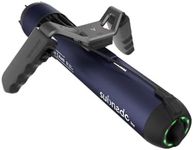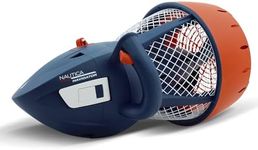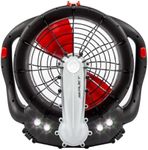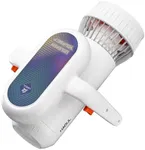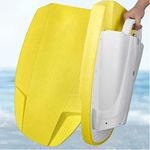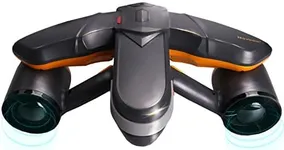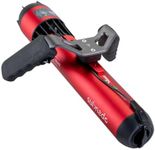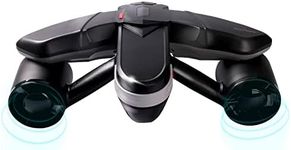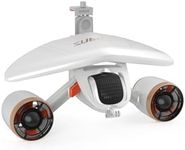Buying Guide for the Best Water Scooters
Choosing the right water scooter can greatly enhance your water adventures, whether you're looking for a thrilling ride or a leisurely cruise. To make an informed decision, it's important to understand the key specifications and how they align with your needs. Here are the main factors to consider when selecting a water scooter.Engine PowerEngine power, measured in horsepower (HP), determines the speed and performance of the water scooter. Higher horsepower means more speed and better performance in rough waters. If you are looking for high-speed thrills or plan to use the scooter for towing activities, opt for a model with higher horsepower (150 HP and above). For casual rides and family fun, a lower horsepower (50-150 HP) will suffice.
Fuel CapacityFuel capacity indicates how much fuel the water scooter can hold, which directly affects how long you can ride before needing to refuel. Larger fuel tanks (15-20 gallons) are ideal for long-distance rides or extended use, while smaller tanks (5-10 gallons) are suitable for shorter, recreational outings. Consider your typical usage patterns to determine the right fuel capacity for you.
Seating CapacitySeating capacity refers to the number of people the water scooter can accommodate. Models typically range from single-seaters to three-seaters. If you plan to ride solo or with one passenger, a one or two-seater will be sufficient. For family outings or group rides, a three-seater model will provide the necessary space and comfort.
Weight CapacityWeight capacity is the maximum weight the water scooter can safely carry, including passengers and gear. It's important to choose a model that can handle your combined weight to ensure safety and optimal performance. For solo riders, a lower weight capacity (300-400 lbs) may be adequate, while families or groups should look for higher capacities (500 lbs and above).
Hull TypeThe hull type affects the stability and handling of the water scooter. There are mainly two types: V-shaped and flat-bottomed. V-shaped hulls offer better performance in rough waters and at high speeds, making them ideal for thrill-seekers. Flat-bottomed hulls provide more stability and are better suited for calm waters and beginners. Choose the hull type based on the water conditions you'll be riding in and your experience level.
Storage OptionsStorage options refer to the compartments available for storing personal items, safety gear, and other essentials. Larger storage compartments are beneficial for long trips or when carrying multiple items. If you plan to carry minimal gear, a model with basic storage will suffice. Consider what you typically bring along on your rides to determine the necessary storage capacity.
Safety FeaturesSafety features such as automatic shut-off, anti-theft systems, and emergency flotation devices are crucial for ensuring a safe riding experience. Look for models that offer comprehensive safety features, especially if you are a beginner or plan to ride in challenging conditions. Prioritize safety to protect yourself and your passengers.
